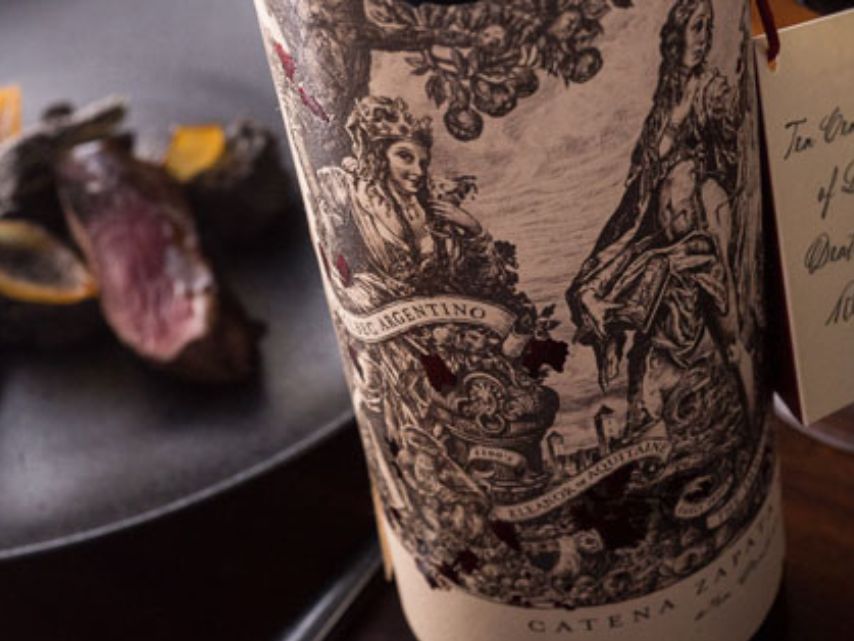Catena Zapata Malbec Argentino: A Tribute to Malbec's Journey
The epic tale of the noble Malbec grape is like no other, and the label for Catena Zapata Malbec Argentino pays tribute to the variety’s history in France and its rise in Argentina. Four female figures embody different landmarks its history. Eleanor of Aquitaine represents the birth of Malbec, she is a strong, Old World presence, lingering at the bridge in Cahors, where Malbec came into its own. Next, the Immigrant symbolises the movement to the New World and the unknown explorers and adventurers who connected Europe with the Americas. Phylloxera personifies the death of Malbec in the Old World, which enabled its rebirth in the New. Finally, there is Bodega Catena Zapata, represented by Adrianna Catena, who depicts birth, earth and motherhood, sharing the riches of the New World. Today, the Catena family’s fourth generation leads the high-altitude renaissance in Argentina; returning Malbec to the sky...where it belongs.

A Blend of Two Vineyards: Nicasia and Angélica
A blend of Malbecs from two vineyards; Nicasia, named after Nicolás Catena Zapata’s grandmother, has shallow loamy soil with gravel on the surface and some topsoil. This is the highest of the two vineyards and is situated at 1,095m above sea level in La Consulta District, San Carlos Region, Mendoza. It was planted in 1996. Just over 1,050m lower is Angélica vineyard, named after Nicolás Catena Zapata’s mother. This lies adjacent to a dry river bed and has light gravel, loam and clay and is in Lunlunta District, Maipú Region, Mendoza. Planted c.1930 this vineyard is over 90 years old.
Winemaking Process
Wild yeasts ferment a mixture of whole clusters (20%) and whole berries (80%) in 225–500l new French oak barrels (100% barrel fermentation) for a period of 30 days, giving seamless oak integration. The fermentation temperature is kept low, extracting intense aromas. Cap management is done by hand to ensure soft, gentle flavours and tannin extraction. Alcoholic and malolactic fermentation in barrel leaves considerable lees and sediment. The wine is aged in French oak barrels for 18 months.











